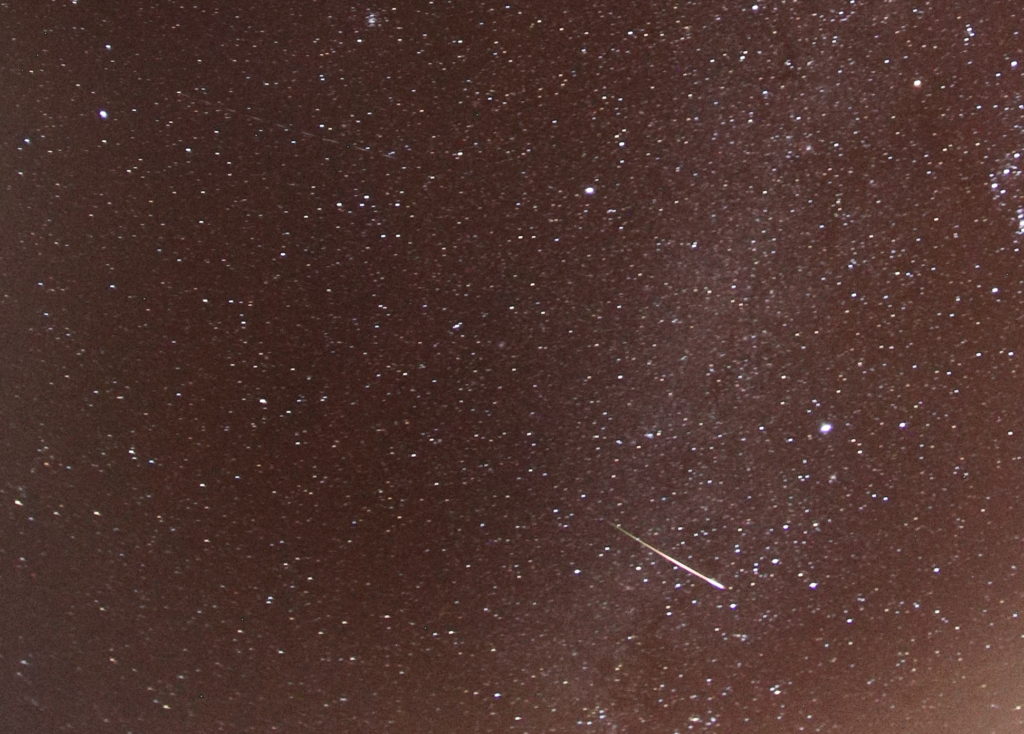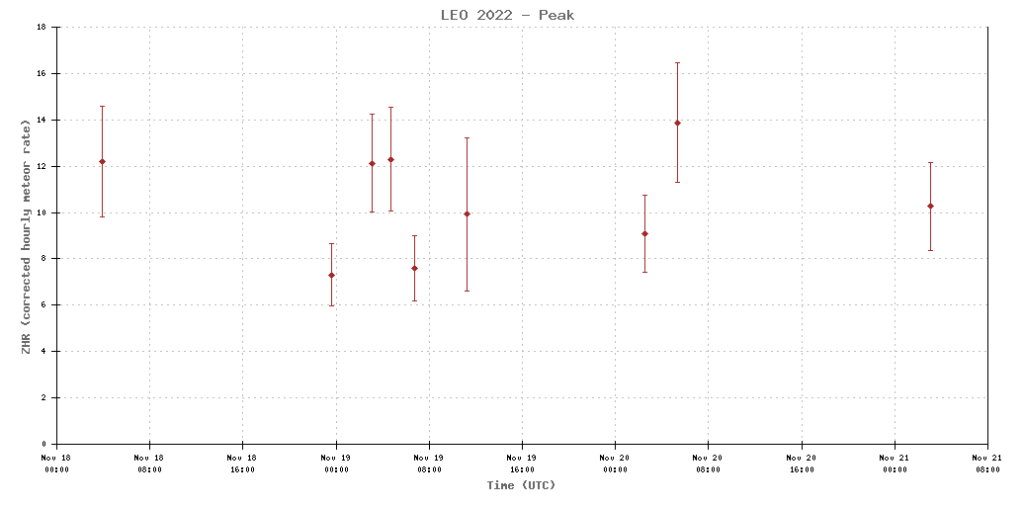Apart from the nodal crossing (“regular maximum”) on Nov 17, 23UT, there were predictions of several possible additional dust trail encounters for the Leonids meteor shower in 2022.

The first possible rate enhancement was calculated for Nov 18, 07 UT. The currently available visual data give no hint at a rate increase (Figure 2). At a first glance, this seems also to be the case for Nov 19, 06h00-06h30 UT. At least no outburst. “During my own observing session from the Observatorio del Teide at Tenerife I noticed several bright Leonids between 0520 and 0555 UT. Two LEO had -4 mag, one -5 mag (Figure 1) with a 1-min-train. At the location, the morning twilight effectively ends the sessions at 0630UT, and the Leonids in the last half hour (covering the possible encounter period) did not indicate a rate rise“, explains Jürgen Rendtel. Note that the portion of bright Leonids hints at a lower population index, hence the ZHR and the flux was not enhanced.

Today (Nov 23) Mikhail Maslov added: “The computed 1733 trail was composed of particles with high negative ejection velocities […]. It seems that […] especially smaller ones […] are blown away by solar radiation pressure and only a very small amount of larger particles could remain, and the brighter Leonid meteors you observed could be produced by those scarce larger particles.“




 You saw something bright and fast? Like a huge shooting star? Report it: it may be a fireball.
You saw something bright and fast? Like a huge shooting star? Report it: it may be a fireball.  You counted meteors last night? Share your results with us!
You counted meteors last night? Share your results with us!  You took a photo of a meteor or fireball? You have a screenshot of your cam? Share it with us!
You took a photo of a meteor or fireball? You have a screenshot of your cam? Share it with us!  You caught a meteor or fireball on video? Share your video with us!
You caught a meteor or fireball on video? Share your video with us!
3 comments
Not a IMO member, yet. But I had a chance to go Meteor hunting November 19. Variabile cloud coverage hampered a mag 5.2 sky full view, despite this 0340 to 0510 UT 6 Leonids detected – two mag 3, two mag 2, one mag 0 and one mag -1. Dawn washed out the sky since 0520 TU and by 0550 TU only mag 1 stars were up. Let’s say that just before predicted outburst Leonids activity looks low. I have to check the fisheye DSLR records, first time I used this assembly for this purpose, there is a chance I got the 0419 TU mag 1 Meteor in Tau.
Hi Juergen
Is it possible to publish a plot I have made for Loeonids 2022.
It is sound measurements, so called “kracking sound”.
Sven SM5LE
I observed 2022 Leonids from a very good site at 1.880 m altitude in Austria. Between 01:00 and 05:30 UT of November 19th I saw just five meteors – definitively no outburst…